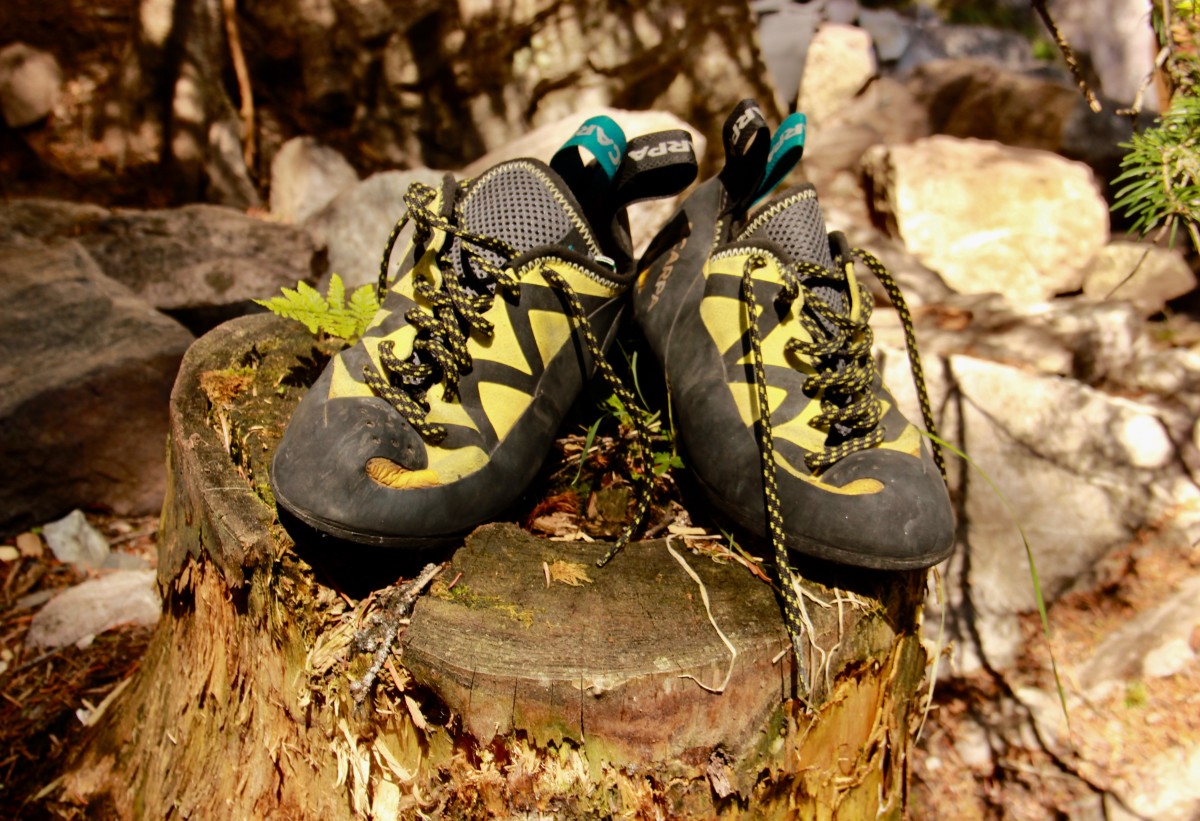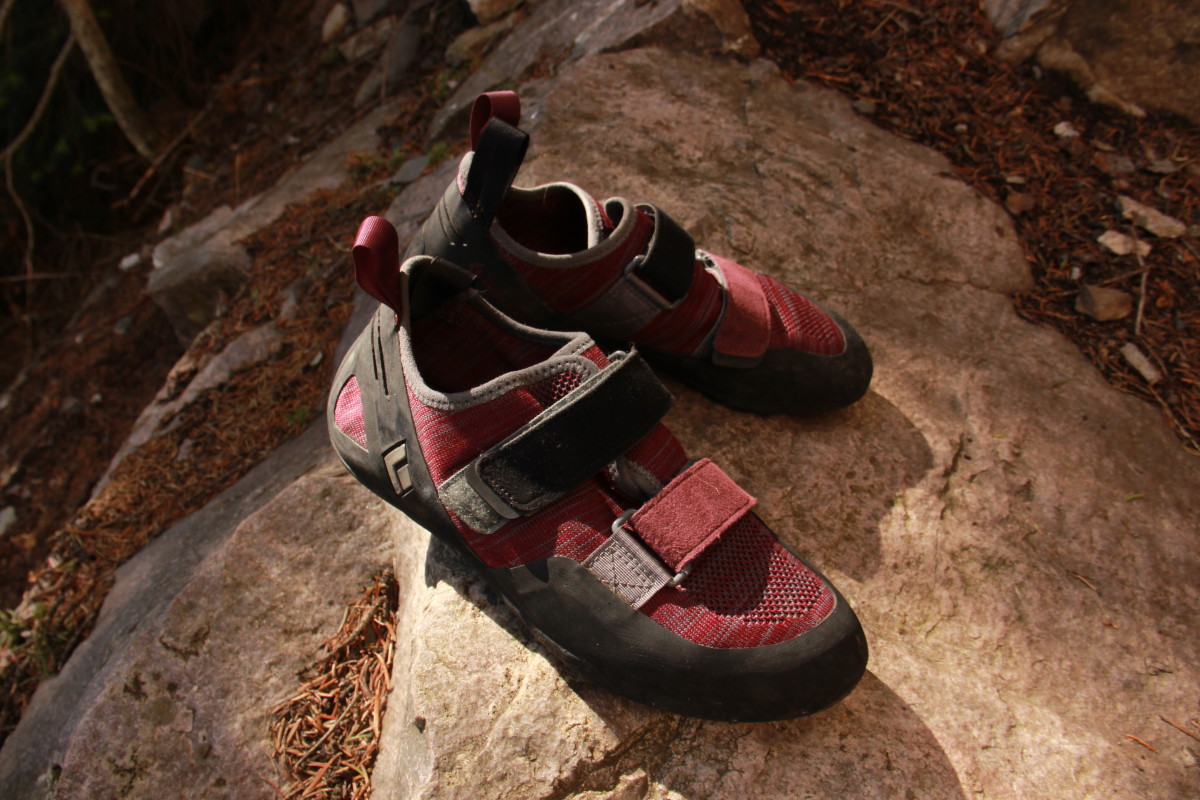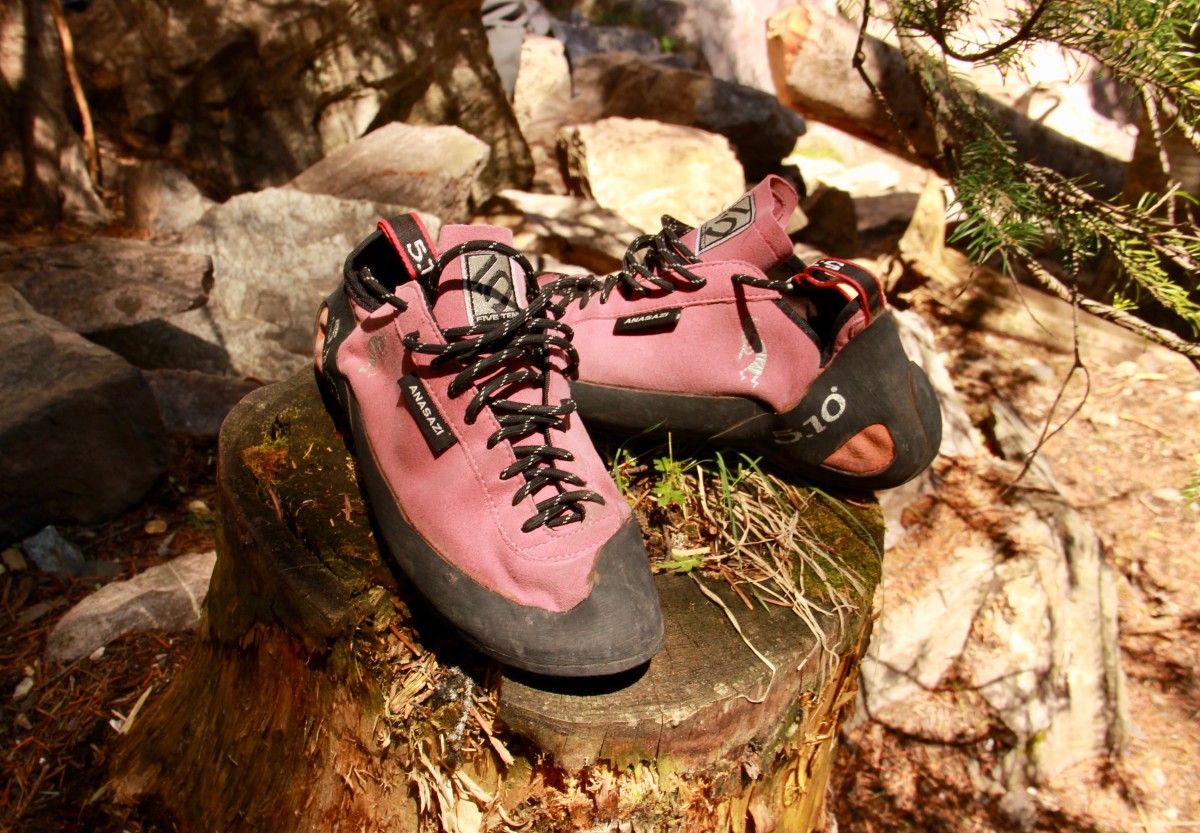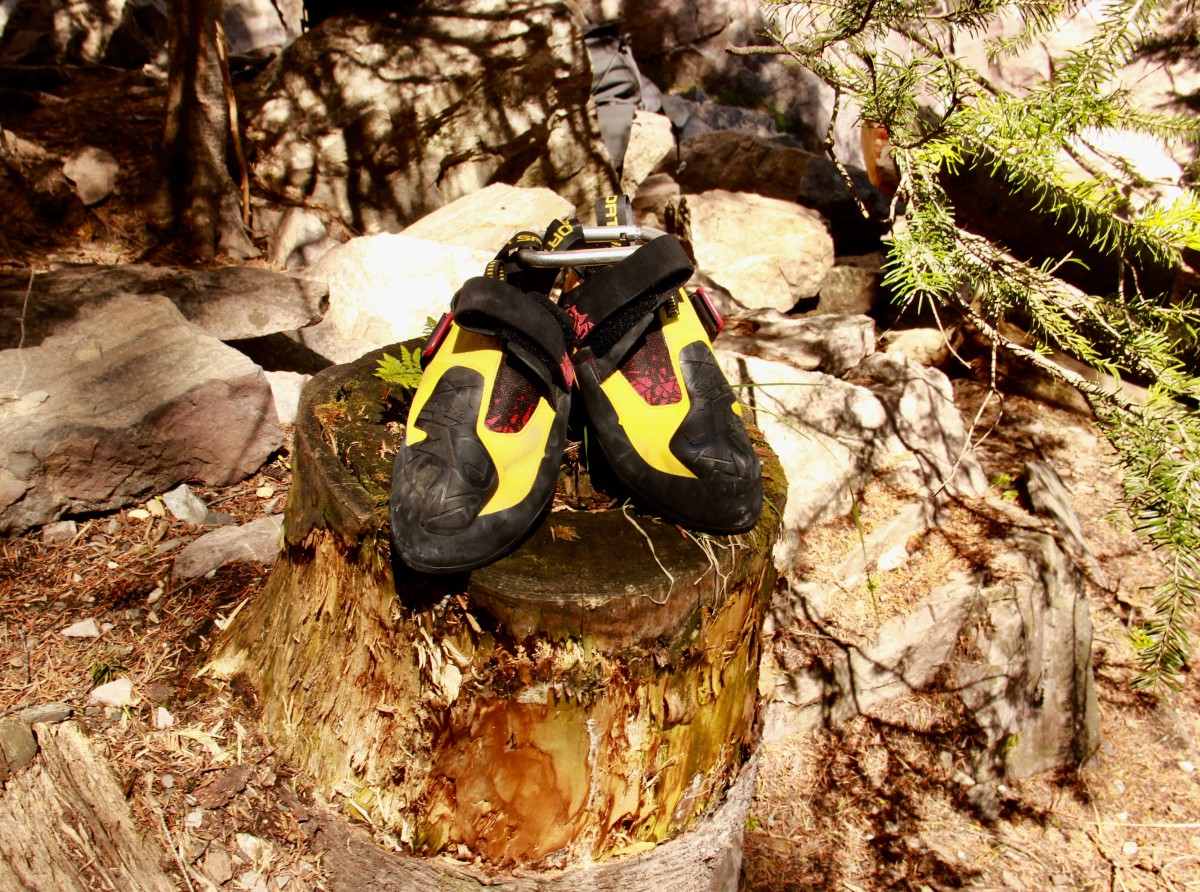Climbing shoes can be a complicated purchase, especially when you are first starting out. Even for long-time climbers who haven’t quite found that exact fit, the quest for the perfect shoe can sometimes seem endless.
The sheer number of options can feel overwhelming, but knowing the basics can help you make a more informed decision. Just like your street shoes or boots, each shoe will have a “last” which dictates the fit due to the shape and volume. The next things to think about are the materials. Most climbing shoes will be leather, which tends to stretch more or synthetic, which tends to keep the shoe’s original shape. Next would be the stiffness and the shape of the rubber. Lastly would be the closure of the shoe which most often is lace-up, slip-on or velcro.
These considerations are just the basics; climbing shoes have become much more nuanced with technology that is unseen to the naked eye. To help us with some straightforward advice, we spoke with Kim Miller CEO of SCARPA North America on advice for getting the best fit. We also picked out some of the most popular shoes for various types of climbing by various brands.
Don’t Overthink It
KM: My first advice is to keep it simple. Don’t get too wrapped up in the technology. Think about what feels good, and how a shoe fits your foot.
Nobody’s Feet Are the Same
KM: If you have a wide foot, you are going to want to consider shoes that have a last that is more square and roomier at the toe area. I’d also say pay attention to the heel area, and how it fits along your achilles tendon and ankle bones. It’s okay to feel a little pressure there, because shoes do and will break in, but if it feels like the shoe is hitting you wrong in those areas, that’s something to pay attention to. No matter what your friends or climbing partners say about a given shoe and how great they think it is, your foot is your foot, and you should pay attention to how a shoe feels, and what fits and what doesn’t.
Consider Where and What Are You Climbing Most
KM: You also have to consider the type of climbing you are going to be doing. If you are climbing sport routes where the climbing is more difficult, but you’ll be in your shoes for less time, you can look at shoes that are more downturned and asymmetric at the toe. That kind of design will be higher performance. But if you are climbing all day in the mountains and in your shoes for a long period of time, you will likely want a shoe with a flatter, straighter shape, which will be more comfortable.
Size and Comfort are Key
KM: There are a lot of misconceptions about downsizing in rock shoes, and how tight a shoe should be to offer the right balance of performance and comfort. To me, the first part of performance is that it’s gotta feel good. Beyond that, when it comes to sizing, different brands and models will fit differently. At SCARPA, we build shoes that you can size very close to your normal shoe size. People climbing at the highest levels of the sport may want to go down from there, but for most people, comfort should be the driver first and foremost. If you’re in pain, it’s harder to climb well.
Here are some of the most popular shoes from the top climbing shoe brands (that just so happen to be some of our favorites).
SCARPA Vapor

SCARPA’s Vapor Lace Rock Shoe is one of their most popular climbing shoes. The shoe was designed to be comfortable, but also have a subtle downturned shape capable of smearing. It has a simple construction of single upper leather piece that eliminates extra seams, ultimately making the shoe more pleasant on long days. The Vapors use SCARPA’s “bi tension” active randing systems which help keep the shoe’s shape over time and give a nice amount of flex and tension. The “active rand” also makes for sizing to be more accurate to street sizes.
Black Diamond Momentum

Black Diamond first started making climbing shoes last year and since then their shoes have already become classics. Their Momentum shoes are a super comfy gym training shoe (but can certainly be worn outside) that has a unique “engineered knit” upper construction made with hemp that aids in making the shoe incredibly breathable. The shoe features a neutral, flat last which helps with vertical and all day climbing.
Five Ten Anasazi Lace

Five Ten’s Anasazi Lace shoe is a cult classic. Affectionately nicknamed “The Pinks” by fans, the Anasazi Lace has a very flat profile and a super hard Stealth C4 sticky rubber which makes the shoe a great edge and smearing shoe. It is made with a synthetic upper material built to minimize stretching. This shoe is best for long technical routes and vertical, but is comfortable for multi-pitches. It will fit almost the same from day one throughout its lifespan, a feature coveted by diehards. The shoe is unisex and was slightly redesigned to accommodate smaller heels (a trait most seen in women.) There are gender offerings in the Anasazi velcro versions, as well as the slightly more aggressive Anasazi Pros.
La Sportiva Skwama

When La Sportiva first released their Skwama, they sold out almost immediately and the shoe was on backorder for months. The reason for this hysteria: the shoe promised to be comfortable (it is a slipper, after all) and have the performance of a much stiffer shoe. The Skwama features a split sole (softer rubber) with a stiff toe and heel. The toe has extra rubber on the forefoot for “toe hooks” and also has La Sportiva’s S-Heel (a harder piece of rubber on each side of the heel) that helps heel hooking. This shoe is great for overhanging climbs and bouldering but has also been appreciated in other styles of climbing.
from Men's Journal https://ift.tt/2DT0PrW


0 comments